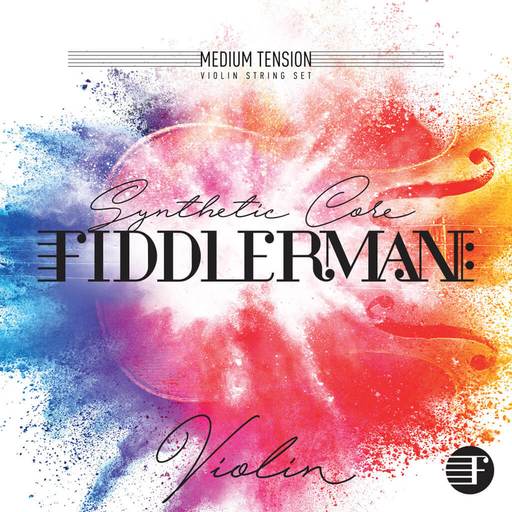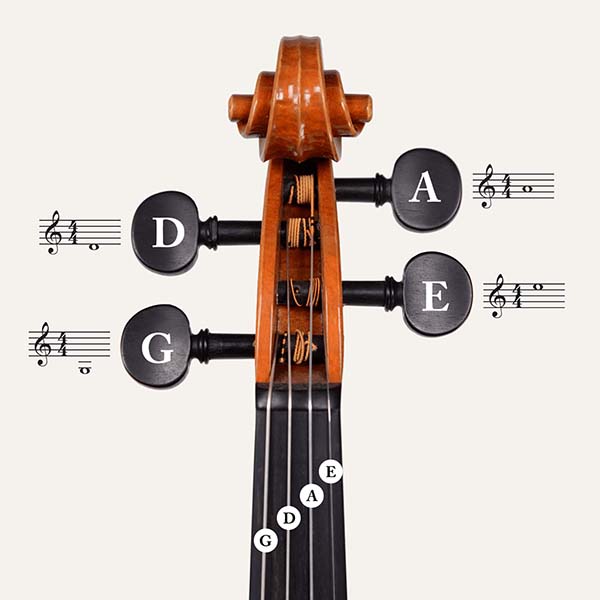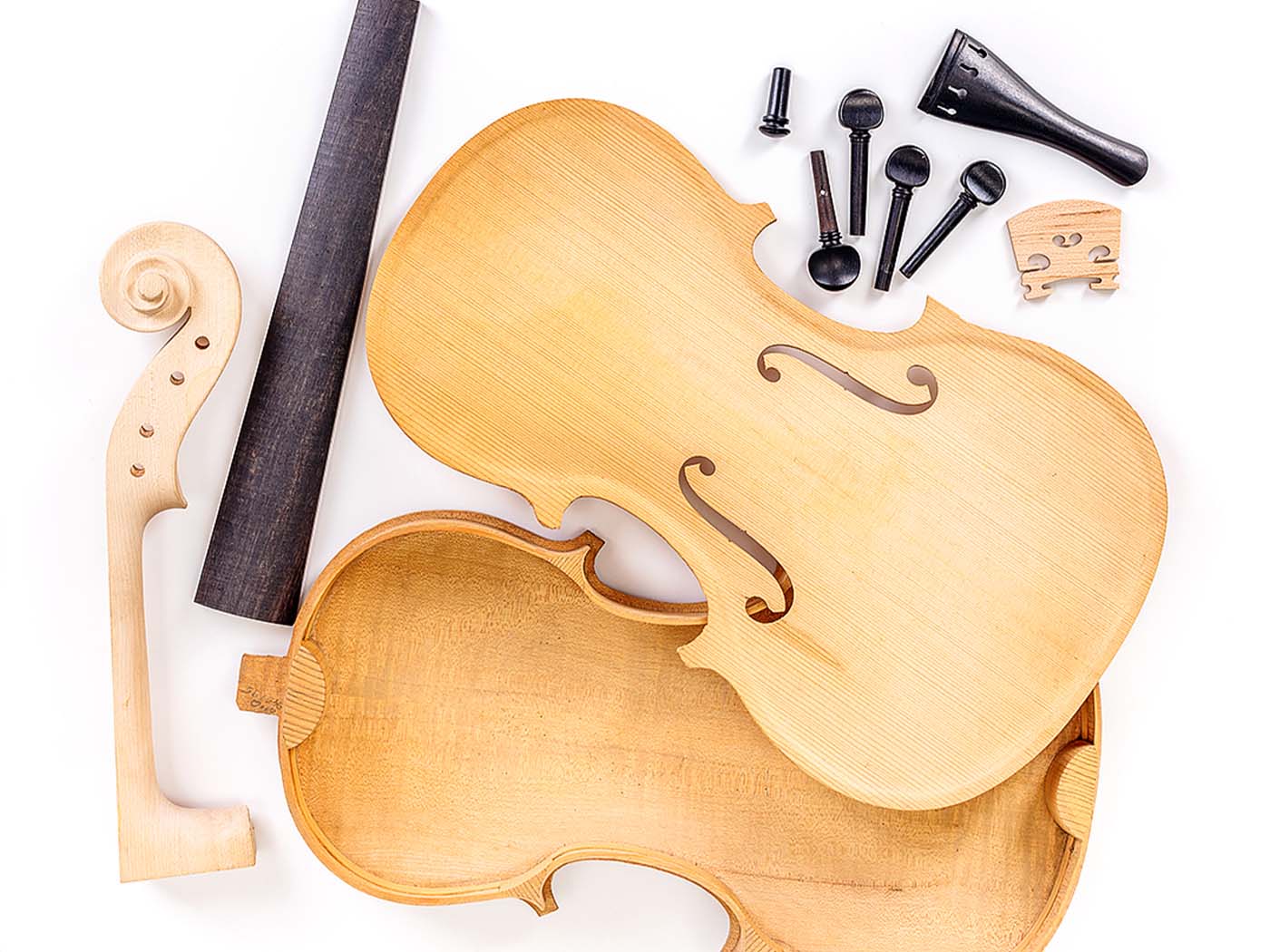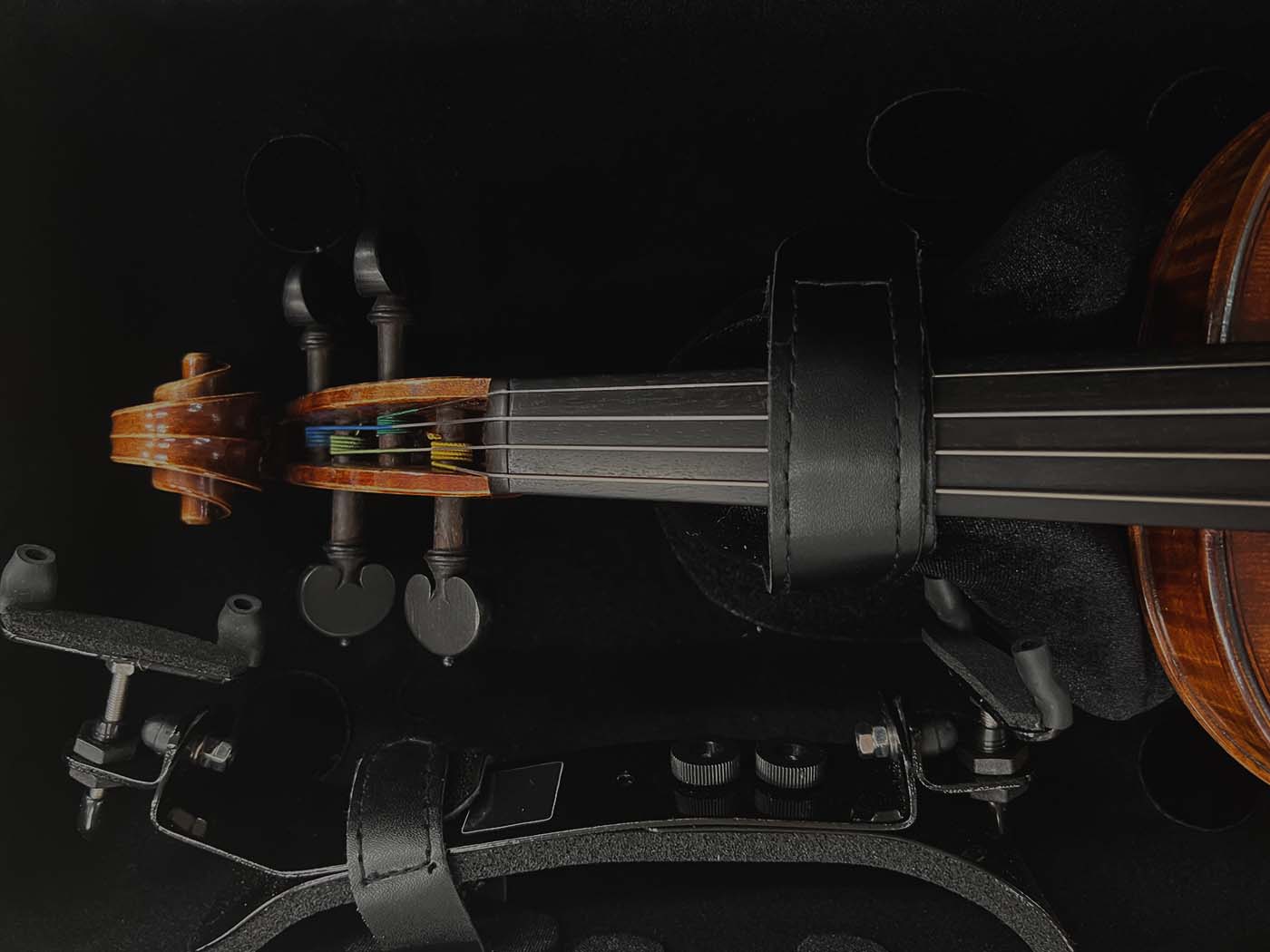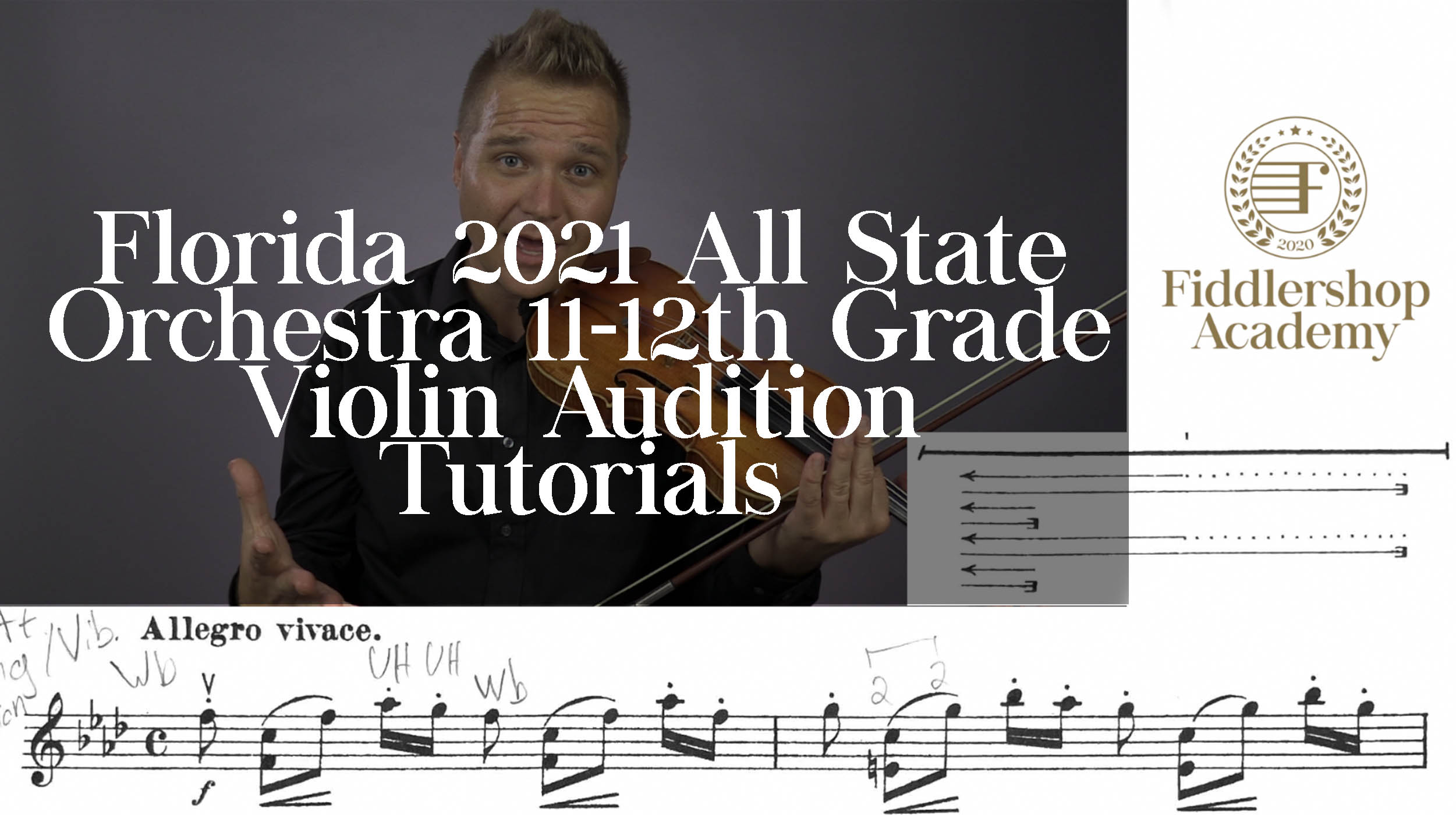Let's start from the top of the violin, and work our way down:
Scroll
The scroll is located at the top of the instrument. It's usually decoratively carved much like the shape of a volute (a rolled-up spiral or a conch shell).
Pegbox
The pegbox is located between the scroll and the neck. This is where the tuning pegs are installed to allow comfortable tuning of your instrument.
Tuning Pegs
Each string on a violin is attached to the tuning pegs. The string is inserted into a drilled hole in the peg, and then wound around the peg shaft in order to tighten.
Strings
When it comes to improving the sound of your instrument, strings play a significant role in the tone, response, feel and projection of your instrument. A traditional violin has 4 strings, that are tuned a fifth apart to the following notes G, D, A, E. Violin strings can be made from a wide range of materials such a steel, aluminum, or synthetic fibers.
Nut
The nut is located just beneath the pegbox, and right above the fingerboard. The nut acts as a support for the strings, and lift them up from the fingerboard, to allow the strings to vibrate freely and generate sound. On a 4-sting violin, the nut have four evenly distributed string grooves carved to hold the strings in place.
Fingerboard/Neck
The neck of the violin is the long wooden piece located between the pegbox and the body of the instrument. Usually it is a small piece of wood where you press your fingers to produce notes on the instrument. Unlike many other stringed instruments, the neck of a violin is a black piece of wood that doesn't have fret bars to indicate where to place your fingers. Many beginners like to use fret indicators like this to help them start off.
Body
The body of the violin is the large hourglass shaped wooden part. It is responsible for most of the resonance from the violin. The body is made from a variety of different types of wood, which will affect the sound that the instrument produces.
F-Holes
The F-holes are the sound holes of the violin, allowing the instrument to project a nice resonant tone as you play. They are usually designed symmetrically across from each other on the body of the violin. The sound of a violin resonates throughout the entire soundboards of the violin with the F-holes allowing the boards to vibrate freely, and let sound waves travel outside of the instrument.
Bridge
The bridge of the violin supports the strings in their position and transmits the vibrations to the body of the violin for amplification. They can be made from various types of woods but are typically made from maple. You can read more about violin bridges in our Guide to Violin Bridges here.
Sound Post
The sound post is a dowel inside the body of the instrument, spanning the space between the top and back plates of the violin held in by friction. Watch Fiddlerman demonstrate how to remove or set a soundpost in a violin here.
Tailpiece
The primary function of a tailpiece is to connect the strings to the bottom of your instrument. The right tailpiece can make the instrument more responsive, easier to play, and more resonant. The tailpiece can also hold sting fine tuners (normally used on the violin E string) to allow for fine adjustments.
Browse through these sleek and sophisticated violin tailpieces that are available in several lengths to allow for customization of tone and sound projection in your violin - certainly noticeable to the trained ear of an experienced violinist. Whether you require a standard Hill style violin tailpiece with built in fine tuners, a professional high-grade acoustical “Harp” violin tailpiece, a carbon composite unit for a contemporary look, or even a French model tailpiece in either ebony or rosewood, you’ll find these and more at Fiddlershop.
Tailgut / Tailpiece Adjuster
The tail gut or tailpiece adjuster, is a string commonly made out of nylon, steel or Kevlar, that attaches the tailpiece to the end button, and allow the tailpiece to resonate freely together with the strings. The tailgut / tailpiece adjuster, can be shortened or extended to allow for adjustment to the vibrating string length.
Chinrest
The Chinrest - usually made of ebony, rosewood, boxwood, or plastic -- attaches to the body of a violin to assist the positions of the violinist's jaw or chin on the instrument. If you need a new violin chin rest for your prized instrument, browse our assortment of comfortable and ergonomically-correct pads that promote proper alignment at all times and are crafted to match the beautiful contours and subtle hues of a standard violin. Available in several sizes to pair perfectly with your instrument and offered in a range of densities to match those with various jaw compositions. So, whether you’re looking for a simple Dresden chinrest with a modest contour, an English/Hill model with a flat profile, an SAS chinrest for an original, classic look, a hypoallergenic model to promote irritation-free playing, or anywhere in-between, you’ll find your ideal unit today - only at Fiddlershop.
Endbutton / Endpin
As mentioned above, the end button is used to anchor the tail gut, tailpiece, and the strings at the bottom off the instrument. The end button has a conical shaft that is secured to the bottom block of the inside of the violin body. This allows the end button to withstand the great pressure from the strings being under to the right pitch and tension.

The Parts of a Violin Bow
At Fiddlershop, we stock an extensive range of violin bows for sale. Our violin bows range from fiberglass bows that are durable and affordable for beginners to chocolate Pernambuco bows personally inspected by our experienced Luthier. We also have a full supply of basic Brazilwood bows; high-grade carbon fiber composite violin bows; bows made of Ipe, Sandalwood; and carbon fiber/premium wood hybrid bows. We carry violin bows for sale from top brands including Holstein, Presto, Glasser, and JonPaul. Whether you play classical, folk, jazz, or rock, and prefer a round or octagonal bow, we can help you find the best bow for your style. We're happy to discuss how to select the ideal bow with strength and good camber, perfectly balanced for you from tip to frog to produce broad, focused sound with speed, power, balance, and optimal resistance. We can help you play with perfect confidence without thinking about your violin bow. Contact us through the message below or give us a call!
Bow Hair
The hair is the material of the bow that touches the violin strings to produce sound It is typically made out of horse hair or a synthetic material. In order for the violin to produce a sound, you have to make sure that the hair of the bow is well rosined. Violin rosin is designed to boost friction on stringed instruments and improve the tonal sound qualities when the bow string meets the instrument's strings. Without rosin, the strings “speak” without clear articulation, and tones will be flat, muted, or simply unpleasing to the ear. You can learn more on how to rosin your bow here. Fiddlershop carries a wide away of rosin that you can find here. Not sure which one to choose? Simply call us and we’ll help you select the perfect violin rosin for your playing style and budget. Once you do, we’ll ship to your front door and help you quickly improve the playability and performance of your prized instrument. Order today and see just how important violin bow rosin is to maximizing your playing ability.
Frog
The frog, located towards the bottom of the bow, is the part that the violinist holds.
*We would recommend to check out the new and improved Fiddlerman Carbon Fiber Bow. If you have purchased any beginner or intermediate violin outfits, try upgrading to the new Fiddlerman Carbon Fiber Weave Violin Bow or Fiddlerman Hybrid Violin Bow.*
This video shows a great example of how big the difference can be between a good and bad violin bow stick. Even though these two bows are the same model from the same wood selection, made at the same workshop and even by the same, there's a huge difference in vibrations they produce!!

